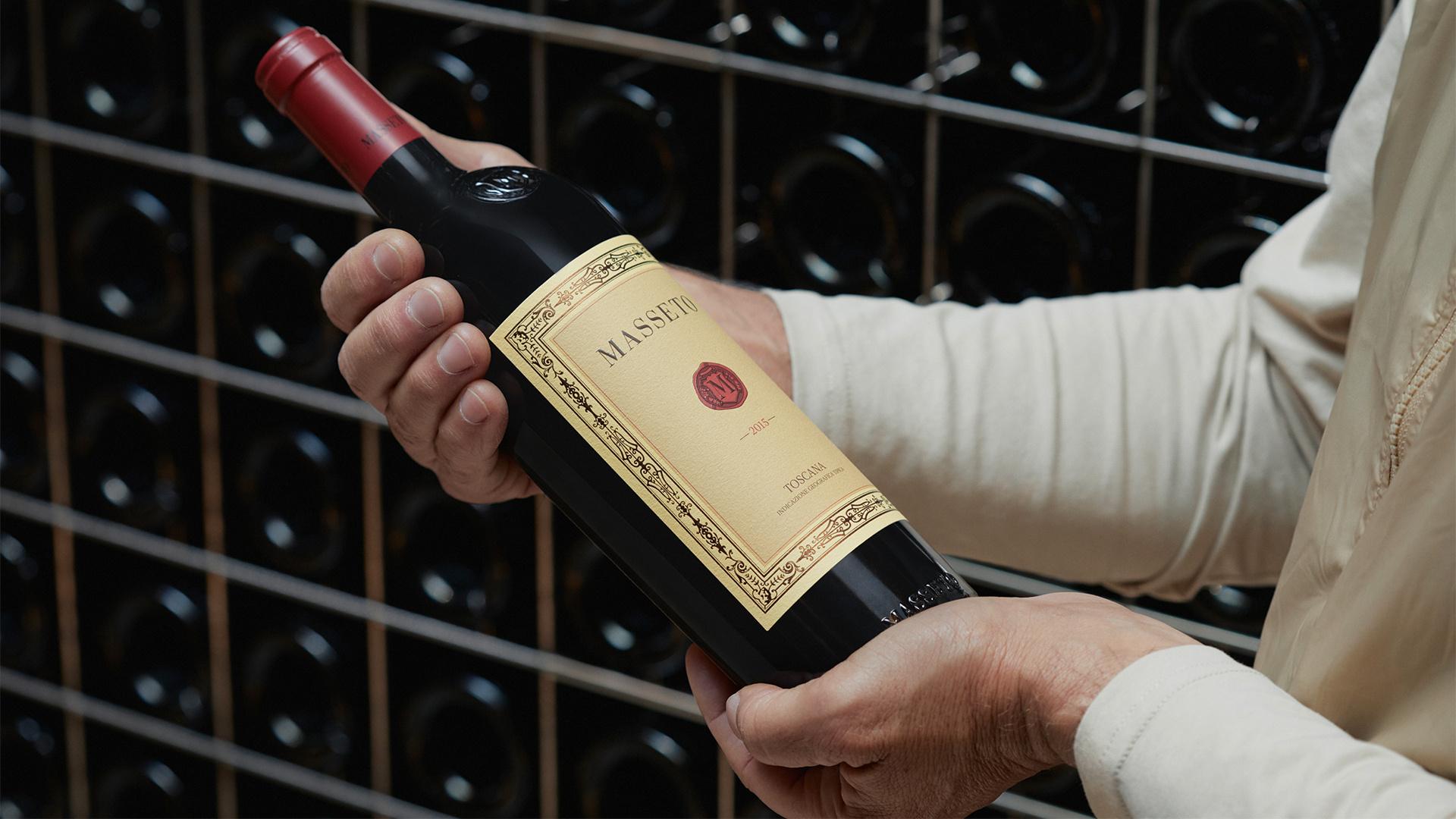OenoFuture’s Chief Wine Analyst and Master of Wine Justin Knock explains why authenticity matters in the fine wine market.
For anyone interested in fine wine the documentary film Sour Grapesis a must-watch. This is the story of Rudy Kurniawan, the most notorious name in the world of fine wine over the past decade, who lured in high-end collectors and sold them tens of millions of dollars of fake wine. Kurniawan has been in jail since 2013, but his actions are of course not unique and there are several lessons we should learn from his tale.
One is that eliminating fake wines out of the system has proven difficult for numerous reasons. Perhaps the most obvious is in the taste. Sampling in this way is not only destructive; who of us can claim they know what ’45 Mouton tastes like, or rather, what it should taste like at 50, 60, 70 or 80 years of age? More insidiously, what about ’62 Lafite?
Kurniawan’s genius was to routinely take a very good shoulder vintage like ’62, blend it with a little young Cabernet from the New World, and produce the acclaimed ’61 – thereby instantly multiplying the cost of his still high-quality components many times over.
In the case of the collectors in the film it was clear that many of them were willing to suspend disbelief to fulfil dreams of tasting exquisitely rare wine, an all-too-familiar example of investor emotions getting the better of rational thought. Despite concerns about where and how Kurniawan was finding these wonder wines, the victims wanted to believe that what he was bringing them was real. A seminal line in the film is after Kurniawan has gone to prison, they ask a collector what they thought of him now. The reply, ‘yeah I know he ripped us off, but … Rudy was such a great taster’.
While Kurniawan was convicted as a rogue hand, it’s clear that his actions were enabled by others who bankrolled his acquisitions, aided in producing huge quantities of fake wine, and bolstered his credibility by offering lots at auction. Whilst never convicted on charges, one very famous New York auction house settled out of court with American billionaire Bill Koch for selling him hundreds of Kurniawan fakes (Koch had prior experience buying fakes from another infamous fraud, Hardy Rodenstock, and was not to be shaken down twice). What’s happened to these known fakes? A tiny quantity was destroyed but the vast majority remain in the fine wine market today.
The high ascribed value of fake wine can thus be a barrier to ridding it from the system – in a high stakes game of pass-the-parcel who is ultimately going to bear the loss? In a showdown for the lawyers it’s one thing to assert that within the limits of probability a wine is not genuine. It is something else altogether to guarantee that it is fake. Taking all these things into consideration its therefore a better approach to have extremely robust acquisition protocols and avoid bringing fake wines into the system in the first place.
Prevention rather than cure
Central to Kurniawan’s conviction was the testimony of Maureen Downey, founder of Chai Consulting and WineFraud.com. Amongst the world of fine wine, Maureen and her team of authenticators are a legendary force. They have placed accused fraudsters on trial (Kurniawan, for example) and under the microscope with their approach to authenticating wine. One element is forensic; bottles can be examined under high magnification or alternative light sources to sort the genuine from the fake. This can be aligned to historical research on a domaine or château to understand the exact details of production from a particular vintage. It is research like this that led to Sotheby’s Serena Sutcliffe MW to once quip, ‘There is more ’45 Mouton in the market than was ever made’.
OenoFuture’s method of sourcing stock ex-cellars, that is directly from the producing estate, is the single most important step we can take to guarantee the provenance of the wines in which clients invest, and this covers more than 95% of our inventory purchases. OenoFuture has now taken steps to partner with UK certified authenticator Siobhan Turner (former EGM of the Institute of Masters of Wine), Chai Consulting and Winefraud.com to enhance our sourcing protocols and train the Oeno wine team on authentication measures for the small portion of our acquisitions that are not ex-cellars.
Fraud is good
Can there be a positive outcome from wine fraud? No industry wants to talk about its dark side, especially when the very foundations upon which the industry is built are challenged. Fraudulent wine has been with us since time immemorial, but many may not know that it is also responsible for completely shaping the structure of the 20thcentury wine industry and has made wine the safe and respected beverage it is today.
It may surprise many to know that the first control systems that featured audit trails and production legislation only appeared in the 1930s. Prior to that nothing was available to establish the veracity of a wine’s origin or status. While there were informal quality hierarchy systems in places like Burgundy, and also in Bordeaux with the famous 1855 classification, there were no means of assessing origin forensically or legislatively. Everything was based on trust. The importance of having ‘a reliable merchant’ is short-hand today for one with judicious taste in quality, but back in the day it really was about trust in authenticity.
Fraud became a major problem in wine in the 1870s and 1880s thanks to the advance of phylloxera, the vine louse that devastated European vineyards without discrimination. Over the course of two decades the production of wine in Europe plummeted. With wine being part of the staple diet of both peasants and the gentry, it created chaos in markets and incredible opportunities for the nefarious. The resulting shortage encouraged numerous creative and illegal solutions.
Importation of raisins from the eastern Mediterranean to western Europe rose ten-fold within a decade. The desiccated grapes were steeped in water to rehydrate and leach their sugars and fermented. The nascent German chemical industry supplied colour and other additives thanks to their recent discovery of heavy-metal based inks and dyes. Carcinogenic Fuchsine, thanks to its rich, magenta hue, was a popular additive, while it is said that by 1885 more wine was being ‘made’ on the docks of London, Brussels and Hamburg than in the vineyards of France. Simpler still was the rebadging of wine in cask that had arrived in Bordeaux from Rioja or the Languedoc and passing it off as Claret.
As vineyards died in Europe, so they rose in the New World. Phylloxera was a boon to California, South America, Australia and South Africa as they multiplied plantings and enjoyed export success in a thirsty Europe. Eventually production recovered across Europe as grafting to American rootstock proved successful in nullifying the louse, but by then the world faced a glut from recovering European production, the New World and man-made wines. Collapses in prices led to civil unrest and riots in France in the early 1900s sowing the seeds for major reform. And thus, over a period of several decades the French AOC system (Appellation d’Origin Contrôlée) was born.
Interesting, the AOC system was originally devised to eliminate fraudulent wine production, specifically the passing-off of French regional names with wines from some other origin. It’s actually a trademarking exercise that protects the name of wine from a place, not the quality of the product.
Many things we take for granted today were born in this turbulently fraudulent period. Fine wine once shipped in bulk is now almost exclusively estate bottled – a practice started by Mouton-Rothschild in 1924. Chateauneuf du Pape became the first AOC in 1933, nominating 13 different varieties as the only ones permitted. And yet Grenache, Syrah and Mourvèdre (those of dark colour and rich body) were planted in almost total exclusion to the rest because the Burgundian négociants would buy the production and ship it north for blending. We accept today that Burgundy can be finer than Bordeaux, but back in the 50s and 60s Burgundy was known to be much richer than Claret.
The laying down of strict regulations controlling production in France have propagated into Spain, Italy and the rest of Europe. With names like Champagne, Barolo and Pomerol now synonymous with luxury, high quality and high prices it’s impossible to deny the success of the AOC system as one of the greatest marketing exercises in history. Controlled production has encouraged exclusivity which in turn has generated winery profits, much of which has been re-invested improving vineyard quality, winemaking sophistication and international marketing. It’s hard to argue that nearly one hundred years on we are living through the Golden Age of wine. Or to paraphrase Gordon Gecko, ‘Fraud is good’.
More recently, producers themselves have taken further steps to combat fraud by much more sophisticated players. This includes incorporating technology into their products with things like proof-tags, hidden DNA in the label, ultra-violet printing and many others that remain secret to the producers only. Simpler steps such as serial numbers, bottle numbers and strong database management can help wineries trace every bottle through to the end user. Blockchain technology also offers plenty of potential to securely trace the entire history of a bottle, recording where and how it has been stored and under what conditions. There are also other non-invasive techniques that verify the contents and their age through the measurement of chemical isotopes. Wine fingerprinting is surely an anti-fraud technique for the 21stcentury.
Investors and collectors need to be aware of fraud, not afraid of it. The well-educated and well-tooled are also the well-armed in combating fraud in wine which can bring trust and credibility to the market, freeing participants to invest and trade on solid ground.




